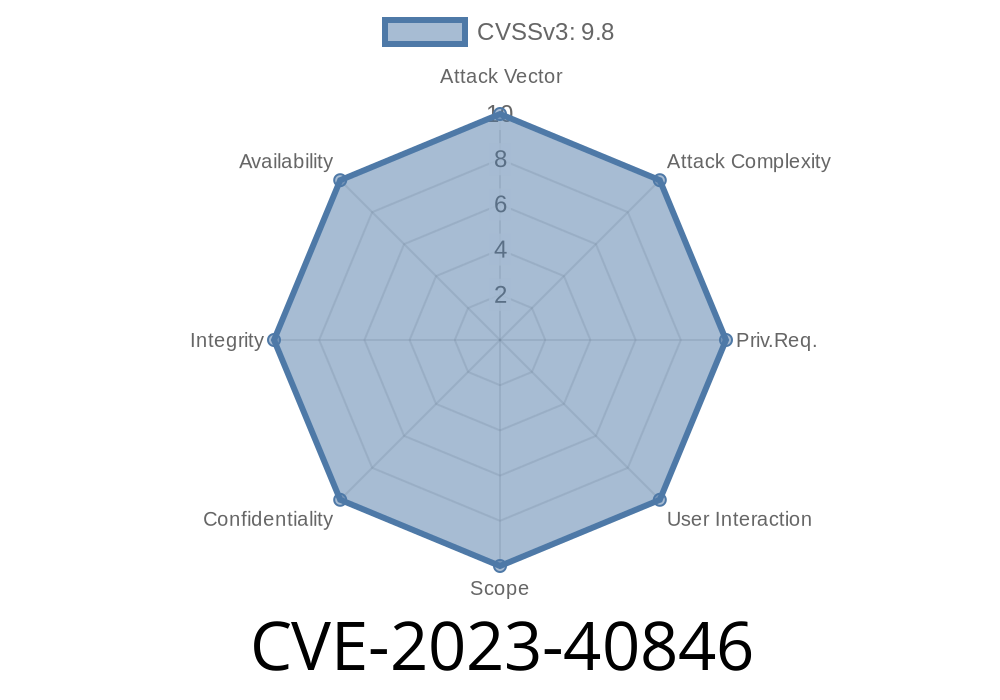A critical vulnerability has been identified in the Tenda AC6 Wi-Fi Router, specifically in the US_AC6V1.BR_V15.03.05.16_multi_TD01.bin firmware, that could potentially allow attackers to exploit a buffer overflow through the sub_90998 function. This vulnerability, assigned the CVE-2023-40846 identifier, can lead to a potential compromise of the affected device, enabling unauthorized access and control over the router's settings and data.
This post aims to provide an in-depth look at the vulnerability, including a description of the exploit details, a code snippet demonstrating the relevant portions of the vulnerable code, and links to original references for further research.
Exploit Details
The vulnerability resides in the sub_90998 function, which is responsible for handling a specific type of data processing within Tenda's firmware. Due to improper input validation and boundary checking, the function is prone to a buffer overflow attack, allowing an attacker to send specially crafted input that exceeds the size of a fixed-size buffer, leading to a memory corruption.
The attacker can ultimately exploit this memory corruption to potentially execute arbitrary code on the targeted device, giving them full control over the router. With such control, the attacker can manipulate router settings, intercept sensitive data, or even plant further malware within the router network.
Code Snippet
The following code snippet demonstrates the vulnerable portion of the sub_90998 function responsible for handling data processing and the subsequent memory copy operation:
int sub_90998(char *input, int length) {
char fixed_buffer[256]; // Fixed-size buffer
// Vulnerable memory copy operation
if (length > ) {
memcpy(fixed_buffer, input, length); // Overflow can occur here
}
// Further processing omitted for brevity
}
As seen in the code snippet, the function accepts an input of arbitrary length and attempts to copy it into the fixed_buffer without checking if the length of the input exceeds the size of the fixed buffer. This oversight enables the possibility of a buffer overflow attack.
For more information on the vulnerability, refer to the following links
1. Official CVE-2023-40846 Entry: Describes the vulnerability and includes information on affected products and versions.
2. National Vulnerability Database Entry: Provides additional details on the vulnerability, including CVSS score, impact, and potential mitigations.
3. Tenda AC6 Router Product Page: Presents details about the Tenda AC6 router, its features, and specifications.
Conclusion
This buffer overflow vulnerability in Tenda AC6 router firmware is a serious concern for users of the affected devices, as it could lead to unauthorized access and control over sensitive data and router settings. It is crucial for device manufacturers to address such issues promptly to ensure the security of their products.
To mitigate this vulnerability, users are advised to keep an eye out for firmware updates from Tenda and apply them as soon as they are available. In the meantime, users can take precautionary measures, such as securing their router with strong, unique passwords, disabling remote administration features, and monitoring network traffic for any suspicious activities.
Timeline
Published on: 08/28/2023 14:15:09 UTC
Last modified on: 08/29/2023 20:22:01 UTC
